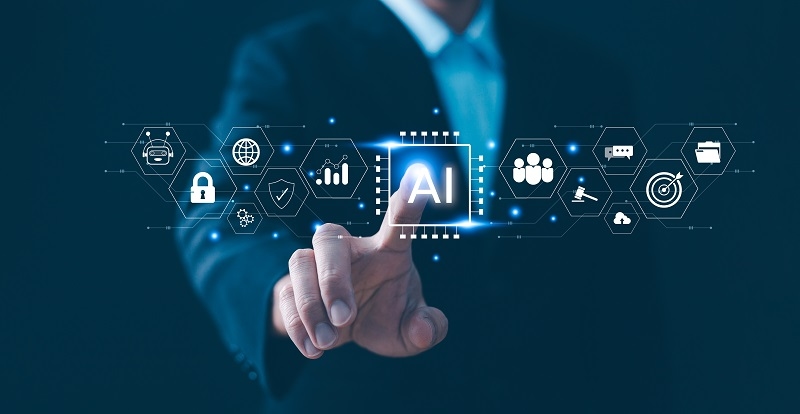
Business operations don’t look the same anymore. In 2025, companies aren’t just using technology to make tasks easier, they’re building smarter systems that can think, learn, and act on their own. With the help of AI software solutions, automation software, and machine learning apps, enterprises are finally managing to do more with less.
These tools have moved from being buzzwords to something essential. They help teams make better decisions, reduce delays, and keep the business running without constant manual effort. The goal isn’t to replace people. It’s to take away the repetitive stuff so humans can focus on real problem-solving.
Over the last few years, businesses have changed how they look at technology. It’s no longer an optional upgrade — it’s the core of how they operate. Intelligent business tools are now part of daily workflows. They sort through endless data, spot patterns, and suggest solutions long before anyone asks for them.
This shift is huge. A few years ago, companies were experimenting. Now, they rely on AI software solutions to stay competitive. Whether it’s supply chains, finance, or customer service, everything is becoming faster and more connected.
Every decision in an enterprise costs time. That’s why many organizations now trust AI software solutions to handle data-heavy decisions. These systems read market trends, past results, and customer habits to guide teams toward better actions.
Customer support is one of the best examples. Machine learning apps now handle most first-level queries. They respond instantly, understand tone, and escalate only when something really needs human attention. It means fewer backlogs and happier customers.
Finance teams benefit too. Automation software monitors budgets, processes invoices, and spots odd transactions before they become issues. What once took hours of checking spreadsheets now happens automatically in the background.
In short, these systems give teams time to think ahead instead of reacting to problems.
Related Reads: Machine Learning and AI in Cybersecurity: A Quick Guide
Intelligent business tools do more than save time. They turn unused data into insight. When you combine data from customers, logistics, and production, patterns start to appear — and those patterns often point directly to better decisions.
In manufacturing, for instance, smart tools can predict when a machine might break down, helping teams fix it before it stops production. In marketing, they can show which product is likely to sell next month or which customers are at risk of leaving.
And when you connect all this to automation software, the system can act on those insights instantly. Prices adjust automatically, messages go out at the right moment, and reports are ready before anyone asks.
That’s not just efficiency. That’s foresight.
The most noticeable benefit of automation software is how it eliminates inconsistency. Tasks that used to be slow or error-prone now run smoothly every single time. Whether it’s scheduling shipments or approving expenses, automation keeps everything on track.
Modern companies don’t want different teams working in silos. That’s where connected systems come in. With AI software solutions, information flows freely between departments. Sales knows what’s in stock, finance sees spending in real time, and managers get accurate updates without waiting on reports.
This kind of visibility creates an edge. Teams can plan faster, respond quicker, and stay focused on customers instead of paperwork. The companies that use intelligent business tools this way are the ones leading their industries — not because they’re bigger, but because they’re smarter.

Machine learning apps have quietly become the backbone of daily decisions. They learn from real business data and predict what’s likely to happen next. HR teams use them to identify who might leave the company or what skills are missing. Supply chain managers use them to adjust deliveries based on upcoming demand.
The most amazing thing about these applications is that they are constantly learning. With each new input, they become more precise. Moreover, if they work in conjunction with the automation software, they do not only provide insights but also automatically trigger the next step in the process.
Instead of teams waiting for analysis, they get instant actions. That’s a huge difference between being reactive and being ready.
Must Read: Why Managed IT Services Are Vital for Scaling Small Business
Of course, it’s not all smooth. Many organizations still face problems when bringing these systems to life. The biggest one is data. AI software solutions need clean, structured, and reliable data to work well. When data is scattered or outdated, the results can be misleading.
Security is another major factor. Intelligent business tools are usually responsible for dealing with the most confidential data, and hence users must be careful all the time about who has access and where the data is stored. The combination of process transparency with regular checks is one of the methods of keeping the data secure.
Moreover, there’s also the human element involved. The main reason behind employees' resistance to change is their fear of losing jobs to automation. However, the reality is that the automation software is best when accompanied by human users. The software does the monotonous tasks while the employees get to think, build relationships, and be creative.
Companies that communicate this clearly and provide training for their employees beforehand experience much easier transitions.
If a business wants to get real results, it needs to take a step-by-step approach. Don’t try to overhaul everything at once. Start with one clear problem — like slow inventory tracking or inefficient reporting. Solve that, then expand.
The choice of AI software solutions matters a lot. Go for tools that are flexible, secure, and easy to integrate with what you already have. Complicated setups usually end up wasting time.
Do not forget, however, the human aspect. As machine learning applications and automation software take over, new roles for human workers will emerge. Organizations would better train their staff and encourage cooperation between the team and the technology rather than letting the technology work around the team.
Don’t Miss: Why Choose the Best Small Business Software Solutions?
2025 has one message loud and clear, this transition is not a wave that will pass. Enterprises that have already dived in with AI software solutions, automation software, and machine learning are like those who, by their speed, organization, and understanding of customer needs, have set the highest standards.
The future lies in connected intelligent business tools that combine prediction, decision-making, and action in one place. The businesses that build this kind of ecosystem won’t just keep up. They’ll lead.
For the ones who still have not figured out where to start, the perfect time is now. Data cleansing, process simplification, and selection of tools that align with your objectives are the three main steps you need to take. The objective is not to have machines replacing humans but rather to empower humans with the necessary support to perform at their best.
When AI is correctly implemented, it does not only transform the operations. It changes the whole way a business thinks, plans, and develops. This is the actual change that is happening in 2025 across enterprises.
This content was created by AI